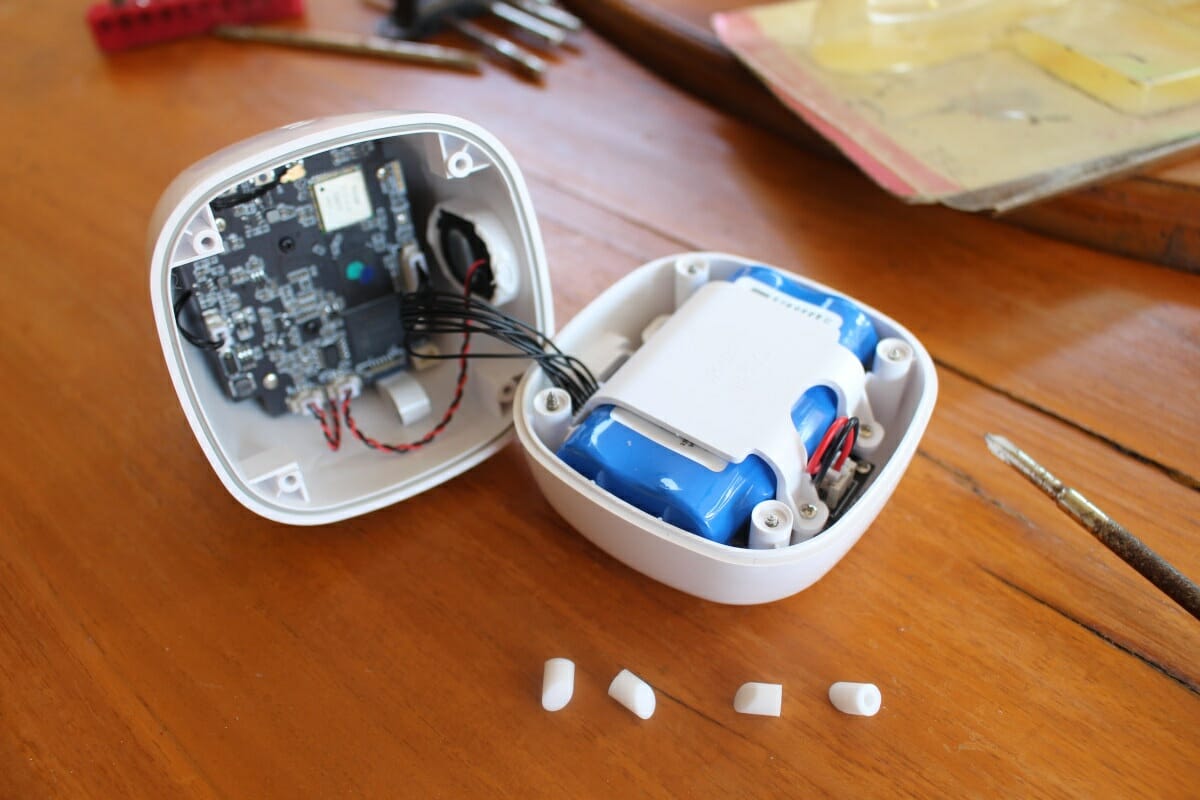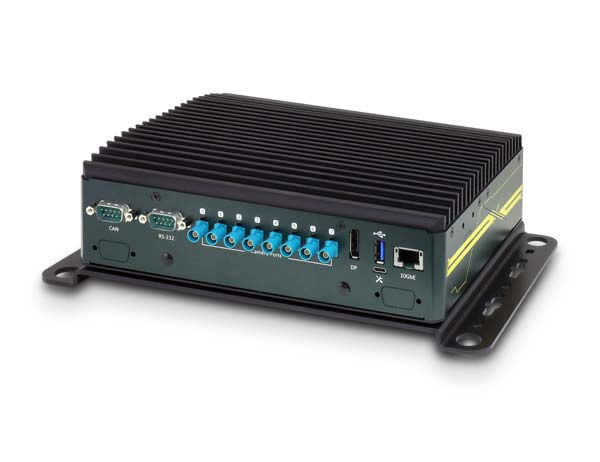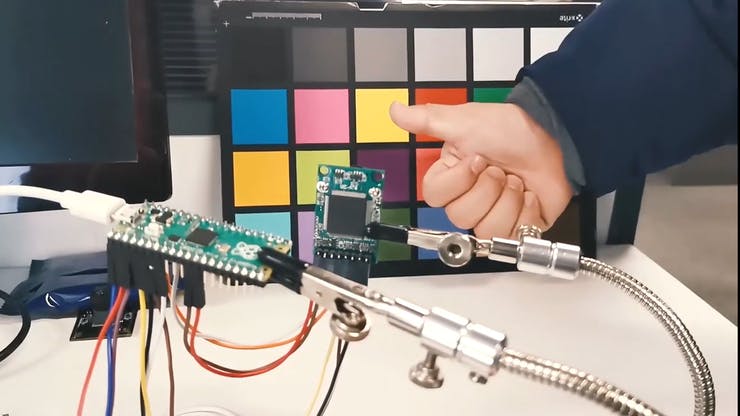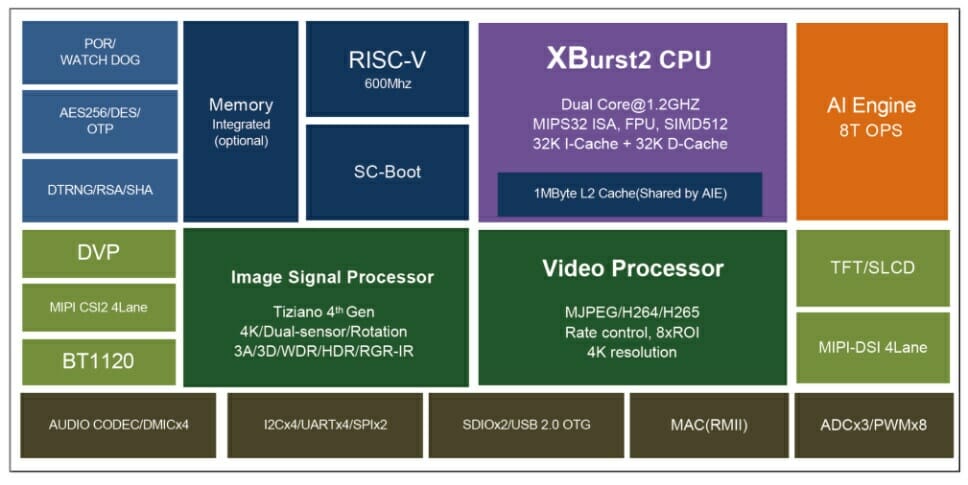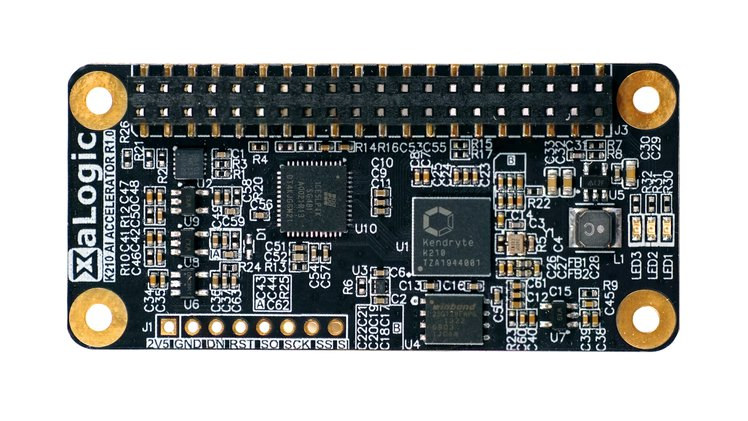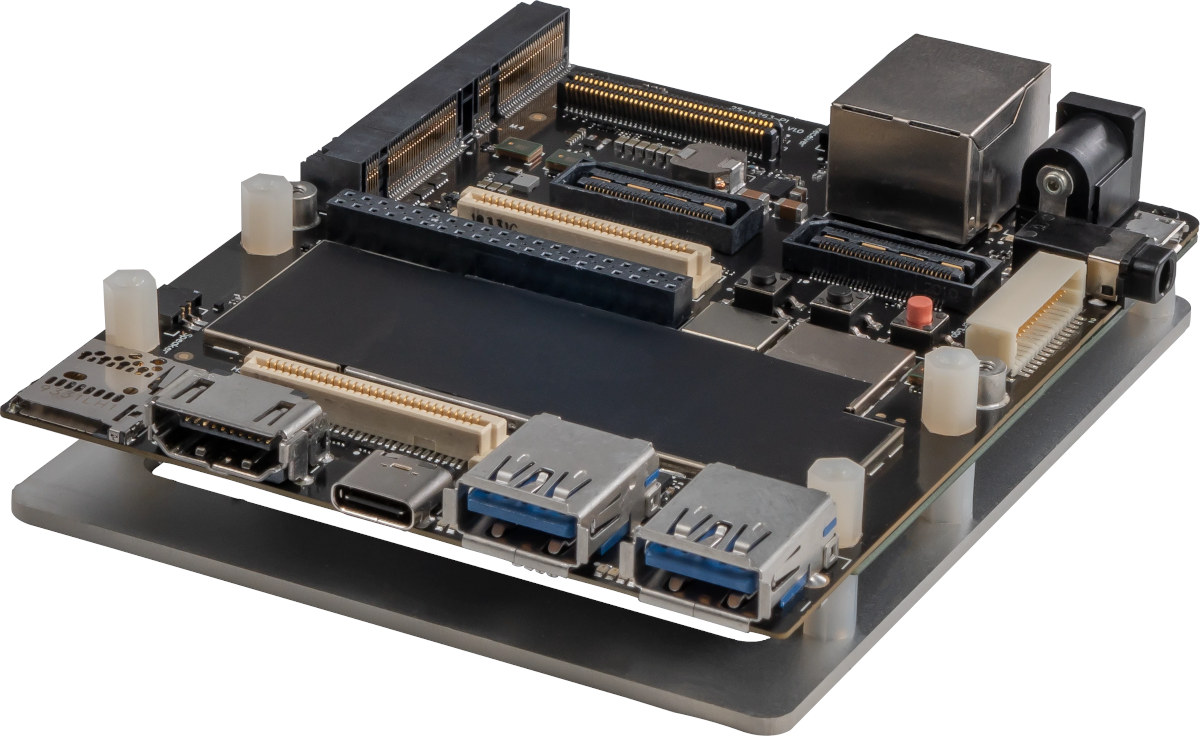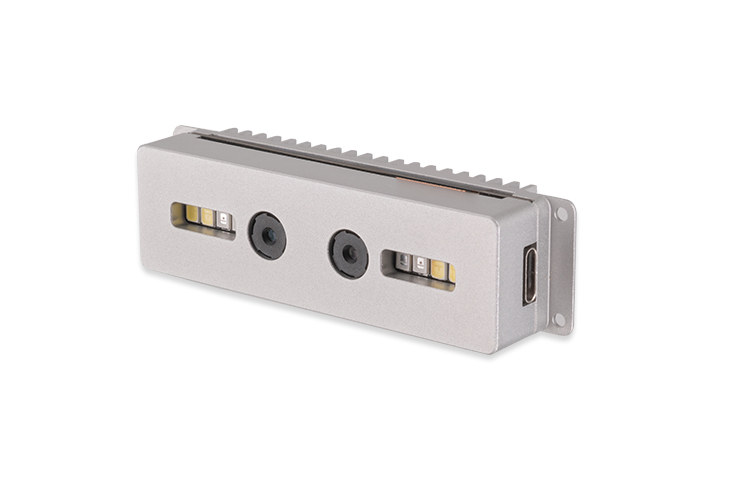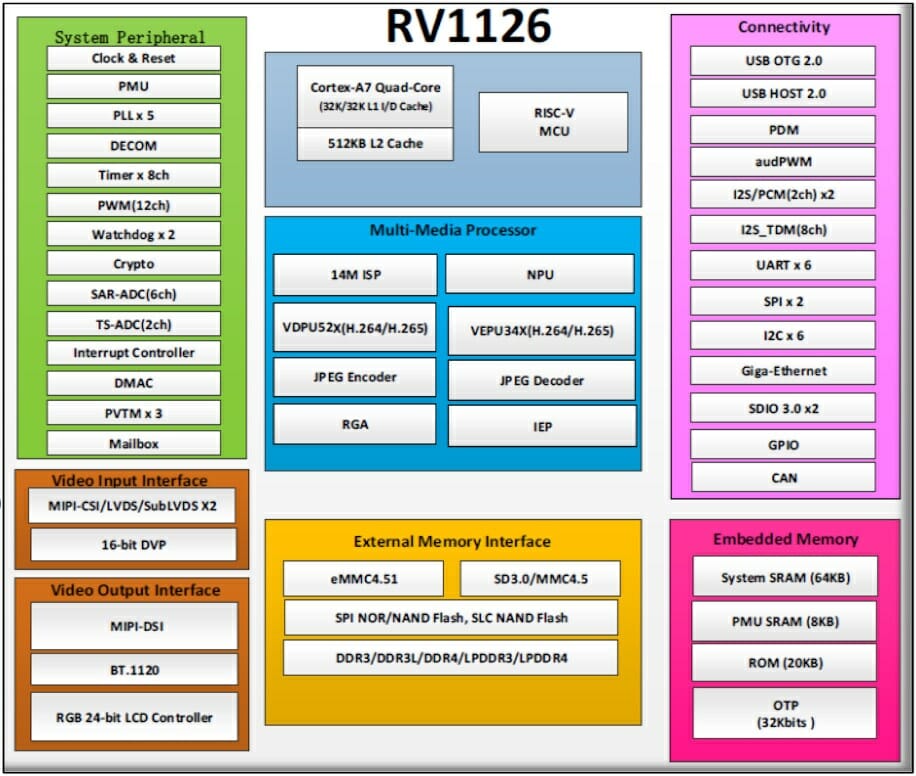As we’ve seen in our Reolink RLC-810A review, AI security cameras greatly reduce the number of false alerts generated by motion sensors, and the Reolink 4K security camera we tested was capable of people and vehicle detection. The Reolink model does not support WiFi, so I had to run a long Ethernet cable, plus a power extension to connect a 12V power adapter since I don’t own a PoE injector. But I’ve been given the opportunity to review another AI security camera, namely Vacos Cam, that also supports human detection, but relies on WiFi connectivity and can be powered by a solar panel removing the need for potentially long cable. As a bonus, it comes with eMMC for storage, so there’s no need for a MicroSD card. In the first part of the review, I’ll list the specifications, unbox the power panel and camera, and tear down Vacos Cam to […]
Jetson AGX Xavier based Edge AI Platform supports 8 GMSL automotive cameras and 10Gbps Ethernet
Neousys Technology, a Taiwan-based provider of rugged embedded systems, has introduced the NRU-110V Edge AI inference platform powered by an NVIDIA Jetson AGX Xavier SoM. It comes with eight FAKRA Z connectors to support up to eight GMSL automotive cameras, as well as one 10GbE (10 Gigabit Ethernet) port for real-time video data transfer. The system specifically supports GMSL cameras with 3-exposure HDR, LED flicker mitigation, good light-sensitivity, and IP67 waterproof characteristics, and also comes with a synchronize mechanism to simultaneously capture high-quality images from 8 GMSL cameras while accepting GPS PPS signal to align image data with other sensors. That makes it suitable for various applications ranging from autonomous driving, mobile robots, precision agriculture, intelligent V2X, to teleoperation. Neousys NRU-110V specifications: System-on-Module – NVIDIA Jetson AGX Xavier SoM with SoC NVIDIA 512-core Volta GPU 8-core Arm Carmel CPU 2x NVDLA Engines 7-Way VLIW Vision Processor Memory – 32GB LPDDR4x […]
Person Detection on Raspberry Pi Pico with ArduCAM and TensorFlow Lite
ArduCAM is popular for camera-based applications with various boards ranging from Arduino to Raspberry Pi. We also saw the company’s tiny coin-sized Raspberry Pi compatible module 5 years ago. Now, it also supports the newly launched Raspberry Pi Pico for real-time video applications. Raspberry Pi Pico is compatible with the ArduCAM Mini 2MP Plus camera featuring an OV2640 2MP CMOS image sensor that supports automatic image control functions including Automatic Exposure Control (AEC) and Automatic Gain Control(AGC). The camera also comes with an onboard JPEG encoder for image compression. The company has provided a Github repository with two demo applications: a video streaming application and an example for basic person detection with the probability percentage of detection. There is also an option of directly using the UF2 files for flashing with Raspberry Pi Pico, if you don’t want to build the demo from the source code yourself. The application runs […]
Ingenic T40 4K Video & AI Vision Processor mixes MIPS & RISC-V cores with AI accelerator
Ingenic T31 MIPS & RISC-V AI video processor was introduced last year with the MIPS core including SIMD128 Vector instructions for deep learning. The Chinese company has now introduced the new Ingenic T40 processor still with MIPS and RISC-V cores, but also a dedicated 8 TOPS AI engine/CNN accelerator. The new processor is especially suited to smart AI vision application thanks to support for 4K cameras, and 4K MJPEG/H.264/H.265 hardware video encoding, complemented by the 8 TOPS AI engine for computer vision workloads such as people detection, face recognition, object detection, and so on. Ingenic T40 key features and specifications: CPU – Dual-core MIPS XBurst2 @ 1.2 GHz with 256KB L2 Cache, SIMD512 instruction set MCU – 600MHz RISC-V coprocessor AI Engine – 8 TOPS neural network accelerator with 1MB memory pool, support for int16/int8/int4/int2 convolution width Memory – DDR2/DDR3/DDR3L up to 2GB Storage – SPI NOR flash, SPI NAND flash, […]
K210 AI Accelerator Raspberry Pi pHAT targets secure AIoT projects (Crowdfunding)
Kendryte K210 is a dual-core RISC-V AI processor that was launched in 2018 and found in several smart audio and computer vision solutions. We previously wrote a Getting Started Guide for Grove AI HAT for Raspberry Pi using Arduino and MicroPython, and XaLogic XAPIZ3500 offered an even more compact K210 solution as a Raspberry pi pHAT with Raspberry Pi Zero form factor. The company is now back with another revision of the board called “XaLogic K210 AI accelerator” designed to work with Raspberry Pi Zero and larger boards with the 40-pin connector. K210 AI Accelerator board specifications: SoC – Kendryte K210 dual-core 64-bit RISC-V processor @ 400 MHz with 8MB on-chip RAM, various low-power AI accelerators delivering up to 0.5 TOPS, Host Interface – 40-pin Raspberry Pi header using: SPI @ 40 MHz via Lattice iCE40 FPGA I2C, UART, JTAG, GPIOs signals Security Infineon Trust-M cloud security chip 128-bit AES […]
Snapdragon 888 Mobile Hardware Development Kit ships with 12GB RAM, 256GB UFS storage
Snapdragon 888 is the latest premium mobile SoC from Qualcomm with the octa-core processor combining one Cortex-X1 core, three Cortex-A78 cores, and four low-power Cortex-A55 cores, with Adreno 660 GPU and Snapdragon X60 5G modem. The processor will likely most be found in smartphones, but Qualcomm partnered with Lantronix to launch the Snapdragon 888 Mobile Hardware Development Kit designed for Android app developers, hardware vendors, and original equipment manufacturers (OEMs). Snapdragon 888 development board specifications: SoC – Qualcomm Snapdragon 888 (SM8350) octa-core Qualcomm Kryo 680 CPU with 1x Cortex-X1 core @ 2.84 GHz, 3x Cortex-A78 cores @ 2.42 GHz, and 4x Cortex-A55 cores @ 1.80 GHz, Adreno 660 GPU with support for OpenCL 2.0 FP, OpenGL ES 3.2, Vulkan 1.1, DX12, and up to 8K 360 VR video playback, Hexagon 780 DSP System Memory – 12GB LPDDR5 PoP memory Storage – 256GB UFS 3.0 flash, 1x MicroSD/UFS card Display HDMI […]
Firefly dual-lens AI camera module comes with Rockchip RV1109 or RV1126 processor
We’ve very recently written about Rockchip RV1126 quad-core Cortex-A7 processor designed AI cameras thanks to a 2.0 TOPS AI accelerator together with its little dual-core brother: RV1109. We’ve also found some RV1109 and RV1126 evaluation boards, but prices were in the hundreds of dollars. It was then brought to our attention than the upcoming MAIX-III board would feature RV1126 at a more affordable cost, but it turns out there’s no need to wait as Firefly has just launched a dual-lens AI camera module based on either Rockchip RV1109 or RV1126 for under $100 with respectively CAM-C1109S2U and CAM-C1126S2U models. Both version of the modules have the same specifications except for the processor: SoC (one or the other) RV1109 SoC with CPU – Dual-core Arm Cortex-A7 @ 1.5 GHz + RISC-V MCU @ 400 MHz GPU – 2D graphics engine NPU – 1.2 TOPS with support for INT8/ INT16 VPU Encoder […]
Rockchip RV1126 AI Camera SoC features 2.0 TOPS NPU, promises 250ms fast boot
The Rockchip Developer Conference that took place at the end of November 2020 allowed us to learn more about RK3588, RK3566, and RK3568 64-bit Arm processors for AIoT applications. But the company also presented additional details about camera SoC’s, namely the dual-core RV1109 and quad-core RV1126, equipped with a 1.2 TOPS and 2.0 TOPS respectively, and both capable of delivering a 250ms fast boot. Rockchip RV1109 and RV1126 share many of the same specifications: CPU RV1109 – Dual-core Arm Cortex-A7 @ 1.5 GHz + RISC-V MCU @ 400 MHz RV1126 – Quad-core Arm Cortex-A7 @ 1.5 GHz + RISC-V MCU @ 400 MHz GPU – 2D graphics engine NPU RV1109 – 1.2 TOPS with support for INT8/ INT16 RV1126 – 2.0 TOPS with support for INT8/ INT16 Memory – 32-bit DDR3/DDR3L/LPDDR2/LPDDR3/DDR4/LPDDR4 up to 4GB RAM Storage – eMMC 4.51, Serial SPI NOR Flash or NAND flash with fast booting support, […]


